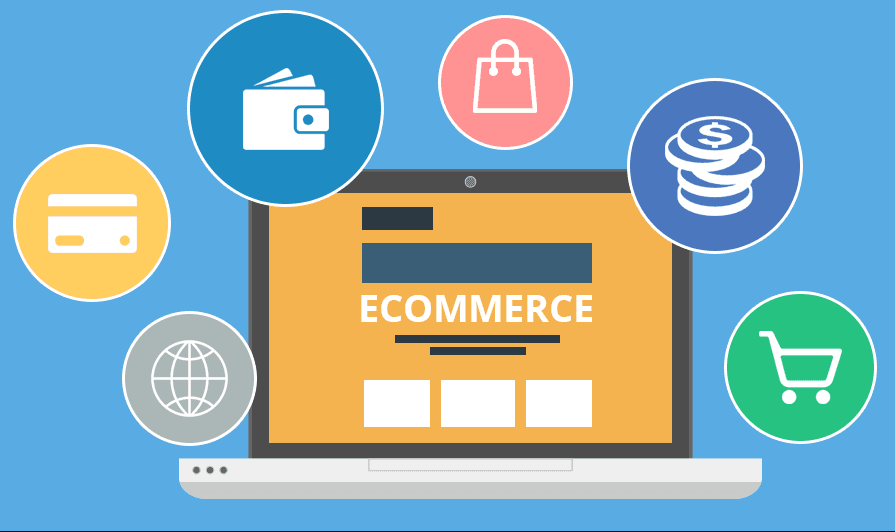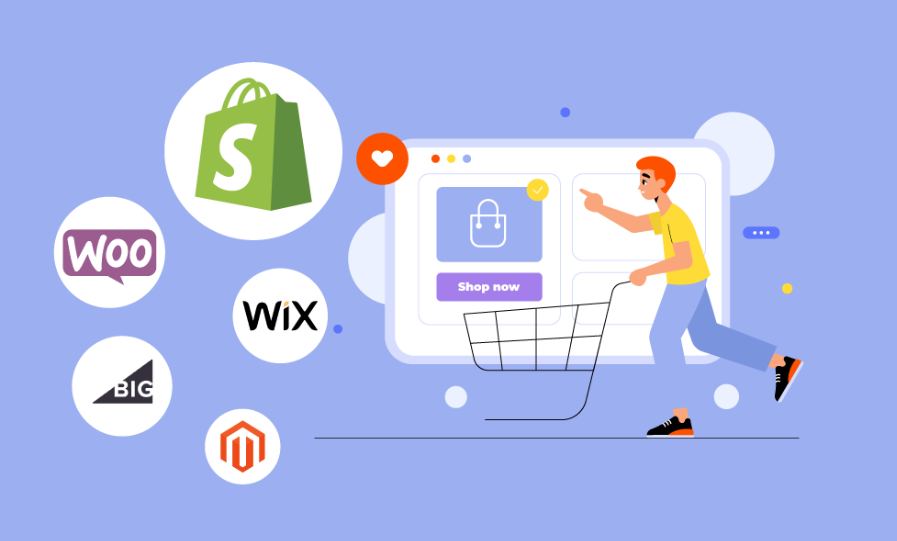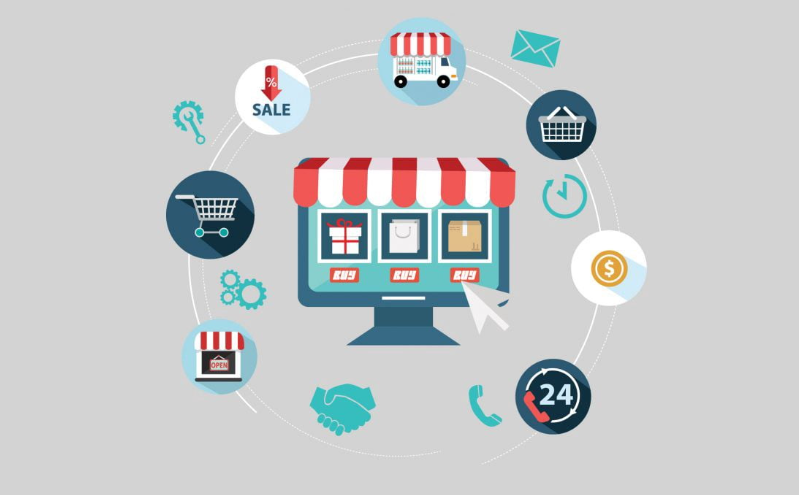Identifying Your Business Requirements
Thus, defining business requirements begins when you determine your offer. Is your business selling tangible goods, digital goods or both? One needs to know a company’s inventory type since different sites provide unique programs for each type.
One such determinant is the degree of specialization or the scope of your business. Are you a new small business or venturing into new markets? The development path may be an indicator of which among them is the most appropriate for a small company or one that is best suited to managing large-scale operations.
The next step is, therefore, to look at your target market. What are your target consumers, or are you targeting everyone in your country or overseas? It is also important that whoever you target knows which platform you use can accommodate multilingualism and various currencies. This is particularly important if your goals include creating a considerable customer audience from different countries.
Budget restrictions are still another significant factor. It’s not just asking for how much money will be required at the very start but also about how much money will have to be spent subsequently. Consider any sundry costs associated with your firm’s expansion, such as prices for various inflation levels or extra space for storage in your facility.
Lastly, think that such features may be valuable to your business. Is extensive organization capability, superior analytical function, comprehensive marketing feature, or an impeccable interface with other programs required? It will be easier to eliminate social media platforms that don’t satisfy your basic requirements if you list essential functions.
Here, you prepare to select the right eCommerce site platforming to differentiate specified business demands.
Evaluating Key Features
When considering eCommerce platforms, focus on the aspects that will enhance your store’s performance. Begin your analysis of the pliability of each store by looking at how product categories and stock control work since they help keep your store running smoothly.
Another component is SEO tools because they help increase your store’s ranking on search engines and traffic to your site. Everything is about fast and effective marketing tools, including promotions, emailing, the availability of social media, etc., tools that will help you spread the word and reach out to customers.
Mobile optimization is also essential because of the increasing mobile sales trends associated with smartphone and tablet devices. Ensure that the capabilities for creating a platform with responsive design options and a compelling mobile view of the store exist. Flexibility is also needed to search for tools that adjust templates, layouts, and others for your branding.
Another assessment parameter has to be developed to consider the synchronization and integration of the platform with various payments.
This can enhance the ease with which your clients can pay for the products. Integration with other necessary software, such as CRM systems, accounting systems, shipping services, and related software, so that they can be used entirely to enhance the operation is also necessary.
It is important not to dismiss the significance of advanced analytics. These tools can assist you in getting to know your customers, assessing your sales, and thinking through every other aspect of the business.
Additionally, if the platform speaks to multiple countries, determine whether it offers multilanguage and multi-currency options. If you concentrate on these parameters, it is possible to select a tool that would benefit your business’s performed store and objectives.
Cost and Pricing Analysis
When evaluating one eCommerce platform against another, you must know all possible business costs that can come your way. Let’s start with the price: One-time fees could include the Domain Name’s design, development, and registration.
These initial costs can vary significantly between platforms. Monthly subscription fees are another consideration; these can differ based on your chosen plan and the features included. Additionally, be mindful of some platforms’ transaction fees on each sale, as these can add up over time.
Consider the costs associated with third-party integrations and apps. Some of these are available as extras to strengthen the functionality of various platforms, although they are accessible at an additional cost. One has to consider whether such features are necessary for a task or plan to justify expenditure on them. Some platforms may also charge for premium support services, so factor this into your budget if you anticipate needing extra assistance.
Scalability is another cost factor. In the future, you may have to switch to a more advanced plan or expand by adding more storage space or bandwidth. Do not forget to factor in such costs while drawing a budget. When dissecting all of these various cost factors, you are more likely to find a platform that fits your budgetary needs and the plans that will help your business grow.
User-Friendliness and Support
Choosing a user-friendly platform can streamline the management of your online store and improve efficiency. Analysis of these tools can be best initiated by comparing the design tools provided by each of the platforms.
Regarding usability, is this template understood and easily navigated, even for users with no special knowledge in working with different variants of templates for blogs? They are more easily approachable and could help simplify some of the day-to-day management processes within organizations and take less time.
The other important considerations are customer support readiness and efficiency. Evaluate whether the platform provides multiple support channels such as live chat, phone support, and email. A few also contain community areas and complete database search elements for some of the most frequent difficulties.
Any time spent working on the site, documentation, and tutorials is always important. Comprehensive guides, articles, and video tutorials are potent means of decreasing overall time as long as you can bring your store online as soon as possible.
In addition, there are also other(self-servicing) add-ons. For example, a company can make its own onboarding services or employ an account manager who will help you in the initial stages.
Another helpful factor is training and educational materials. Select those which conduct webinars, workshops, and other sessions where you will get information about the current requirements and novelties. This is particularly important because the support team will often be the first and last line of contact, so it is essential to ensure that it needs responsive and efficient clients.
Integrations and System Compatibility
For your eCommerce platform to work efficiently, it must seamlessly connect with your existing tools and systems. Read about how well-integrated the chosen payment gateways, accountancy software, and marketing tools are.
This compatibility can greatly decrease your coordination, enhancing aggregate productivity. Its client must also provide more cross-service integration options to enhance successful order delivery and high customer satisfaction.
All these solutions should be easy to integrate with CRM systems, email marketing solutions and analytics tools because such integration offers more detailed information about how your business is performing and about your customers.
Ensure the platform has APIs because this is very flexible and allows for extension. Integration with other applications and extensions enhances the abilities of an eCommerce platform, and its customization options are essential.
Further, determining straightforwardness in organizing the tools within the platform is crucial since a complex integration process causes time wastage and technical challenges. Last, diving into the platform’s modules or extensions to see whether any other module or extension can add more functionalities to the store.
Security Measures and Reliability
When selecting an eCommerce platform, one must pay special attention to the security measures provided for one’s business and clients. While the participants needed to perform certain actions in the scope of using the chosen platforms for accessing financial and other sensitive data and applications, they were to look for additional security settings like two-factor authentication. This ought to constitute PCI-DSS compliance to safeguard the means of payment.
Ensure your selected platform provides consistent security upgrades and software fixes for loopholes. A good eCommerce platform will also have built-in fraud prevention tools to detect and flag suspicious activities. These features assist in ensuring that customers’ shopping environment is secure.
Also, the platform’s data encryption method must be assessed. Encryption guarantees that users’ data and payment details filled in the required fields are protected during the data transmission and storage processes. This backup usually happens automatically and can be very important if some data gets lost or hacked.
Another feature that needs to be examined is the platform’s disaster recovery solution. Knowing how quickly your platform can recover from an unexpected outage or attack can give you peace of mind. Availability reliability is paramount; choose an online platform with the shortest possible undesired downtime.
Finally, it is necessary to compare the platform’s existing customer support services to security problems. Depending to a greater extent on the speed and efficiency of the support, it can be beneficial when it comes to threats and breaches.
User Experience and Design
Engaging or entertaining a user is especially important when the goal is to turn a website visitor into a patron. In this regard, it is also essential to ensure that the platform’s operation is facilitated with easy-to-use tools for navigation and searching for products so that users can find them easily.
Curation: The quality of themes and templates you and your team select can dramatically change the appearance of your store. Opt for a platform with customization options so that the look of your store matches your company’s image.
Additionally, consider the checkout process; a streamlined, user-friendly checkout can reduce cart abandonment rates. Ensure that the e-commerce platform provides ways of creating great-looking and informative product description pages with better pictures, descriptions, reviews, etc. If design and function are focused on user wants, you can achieve a great online shopping environment that gains and retains business.




